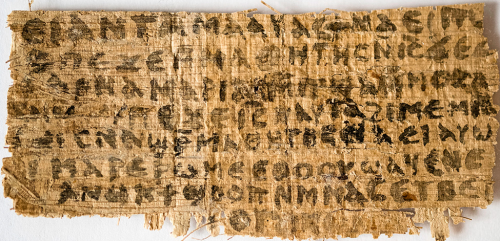 Does the devil know he is a devil? – Elizabeth Madox Roberts
Does the devil know he is a devil? – Elizabeth Madox Roberts
Joe Abercrombie’s First Law Trilogy is a breathtakingly original work of fantasy, built on memorable characters, intertwining plotlines and remarkable world-building. It may also the most cynical and depressing fiction I have ever read. In the end, it did not go at all where I expected it to go, but I can’t stop thinking about it.
Through the first book, Abercrombie’s brand of “realistic” fantasy seems little more than a lesser cousin to George R.R. Martin’s A Song of Ice and Fire, to which he clearly owes a great deal. But by the second and especially the third book, The First Law Trilogy finds its own distinctive voice. Like Martin, Abercrombie offers a diverse cast of memorable anti-heroes and villains, set in a well-developed world of political intrigue, warfare and compromise. Its deeply troubling depiction of the mage Bayaz is well worth the cover price by itself. Its story is engaging, original and rarely predictable, and the dialogue and description steadily improve as the trilogy goes on. But it is the ending that really establishes the series’ greatness, as it transforms itself into a surprisingly effective—though inevitably one-sided—dystopian fantasy.
Like any good dystopian story, its core is an implicit critique of contemporary society, in this case the domineering influence of big business and banking interests on political action, and the abuses of the “war on terror.” Nor does Abercrombie settle for cheap political points; he also efficiently explores how even well-meaning leaders can find themselves drawn into willing participation in a corrupt system beyond their control. Unlike many similar works, in which the hero struggles honorably, if unsuccessfully, against the system, this series rightly emphasizes how the selfish, cowardly and unintended choices of the “heroes” themselves can lead to lasting harm. It also highlights our tendency to exaggerate our own moral progress and convince ourselves that our relapses are necessary or unavoidable. Most of all, it offers a haunting illustration of the concept that “history is written by the victors.”
But at times the series undermines its own message. Showing the aftermath without reveling in the bloodbath itself is one thing Martin’s A Game of Thrones did especially well (though later books in the series less so), but Abercrombie doesn’t seem to have the same knack for it. Like Braveheart or Avatar, The First Law Trilogy wants to critique our easy acceptance of war, but in practice it seems a bit too interested in the details of violence. Showing one of the heroes kill a friend in the closing moments of a battle, or having the victorious general muse that his men’s “we won” sounded a lot like “we lost,” only goes so far to balance out the hundreds pages of detailed description of battle itself. Whatever Abercrombie wishes us to feel about the horror of war, the fact remains that a significant portion of the story—especially in the third book—is filled with detailed and exciting depictions of violence.
In fact, this case is in some ways even worse than Braveheart, as it does this for both war and torture. One of the main characters is a torturer for “the Inquisition,” which in this world is purely a tool of the state—or anyway of those claiming to speak for the state. But while the story regularly emphasizes the way torture can be used to make anyone confess, in practice the books often drag out the violence itself well beyond what is necessary. Moreover, and perhaps without meaning to, Abercrombie ends up implying that torture works. Judging from the results our anti-hero achieves, it would be difficult to escape the conclusion that torture is reprehensible but effective means of accomplishing the torturer’s goals.
More deeply, however, the genre itself is problematic. By presenting itself as a kind of “realistic” fantasy—a genre it maintains pretty faithfully through the first and much of the second book—the series’ late turn towards dystopia leads to a distorted picture of human nature. As a critique of our endless capacity for self-delusion and compromise, The First Law Trilogy is effective, but like any dystopian story, it must leave something important out. Most obviously, women and children rarely appear in this story, and every single one of them either once was or eventually becomes a victim of some act of violence or another. The only female character whose point of view we are given is–literally–part demon, and driven almost entirely by an insatiable wish for vengeance.
Yet even among the men who dominate the story, there is little friendship or kindness. There is lust, but no genuine love untainted by abuse. They occasionally show mercy, but rarely act unselfishly or sacrificially. In the end, Abercrombie does not just give us a cast of broken people in a broken system; he gives us a group that is rarely fully human at all.
And I can’t help wondering how much of this reflects back on another thing that has been left out: any sense of the sacred. Though there are some religious believers in this world, they are virtually all among the enemies, and their faith is more likely to lead to violence than prayer. The central society in which the story is set is thoroughly secular, perhaps even atheistic, and while it becomes clear that they are ignorant of larger forces at work, those forces are inevitably dangerous and uncaring. Indeed, a major theme is that the average person is blissfully unaware of how strongly their society has been shaped by powerful men (almost all men) wielding dark supernatural powers.
This is a world in which hell exists but heaven probably doesn’t. A world full of devils but no angels, where men are little more than monsters, and where people never truly escape what their past has made them. A world in which the idea that human beings have inherent worth is never seriously considered, and no one really believes in a future beyond the grave. If there is a God out there somewhere, he never speaks or acts, and is appealed to only to justify war, slavery and vengeance, never faith, hope and love.
As a dystopian critique, the story works, but as an authentic portrait of humanity it leaves a lot to be desired. The world isn’t full of white knights and black hats, where the guilty always pay and the righteous always prevail. But neither is it a fading grey, where grace and warmth and victory are never more than an evanescence.
Abercrombie is right that even the best among us struggle against our own vices and regrets, follow our own self-interest, and generally fail to overcome the system. But human beings are not mere self-interested devils, and our attempts at justice no more always fail than they always succeed. Not every tale needs a “happily ever after,” and it is generally those with the most ambiguous endings that prove the most thought-provoking, but in the end I guess I want my fantasy more “realistic.” That doesn’t just mean more violent and morally ambiguous; it also means more honest about the worst and best of humanity.




















Recent Comments